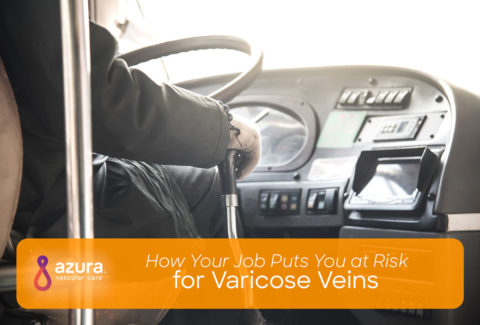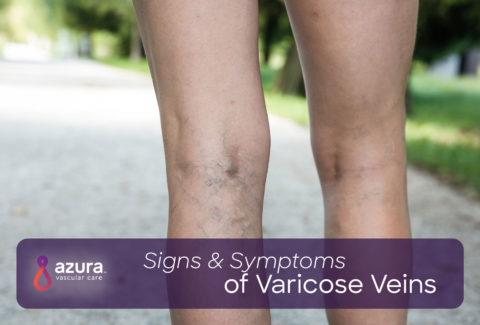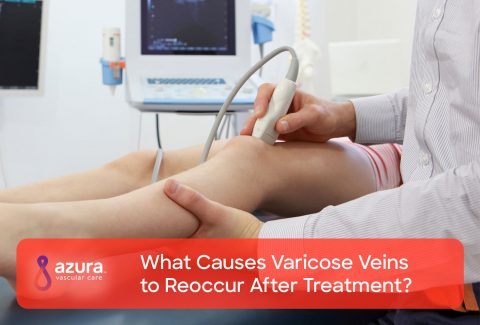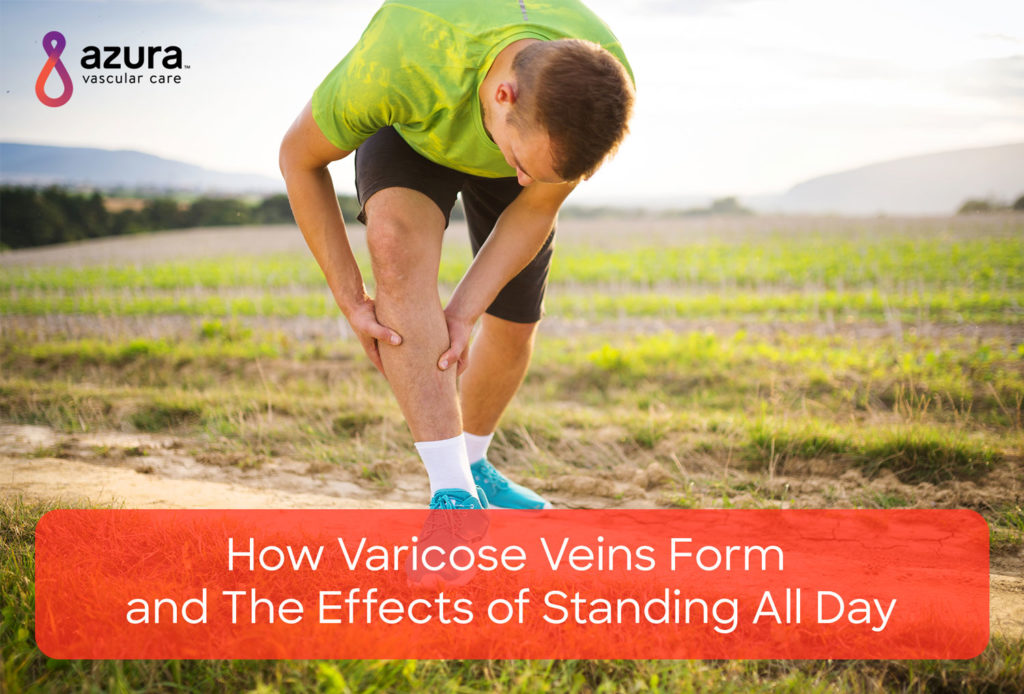
Does it seem like your legs are more tired after you’re on your feet all day?
Do you notice swelling and sock impressions on your legs at the end of the day?
Have you ever wondered if prolonged standing may be contributing to your varicose veins?
If so, you’re not alone. Varicose veins are a common medical condition – in fact, about 30% of adults have them. i Varicose veins form because the valves in the veins that should prevent blood from flowing backwards are not working as they should. The increased amount of blood in the vein pushes against the vein walls, which may already be weak, and the vein gets bigger.
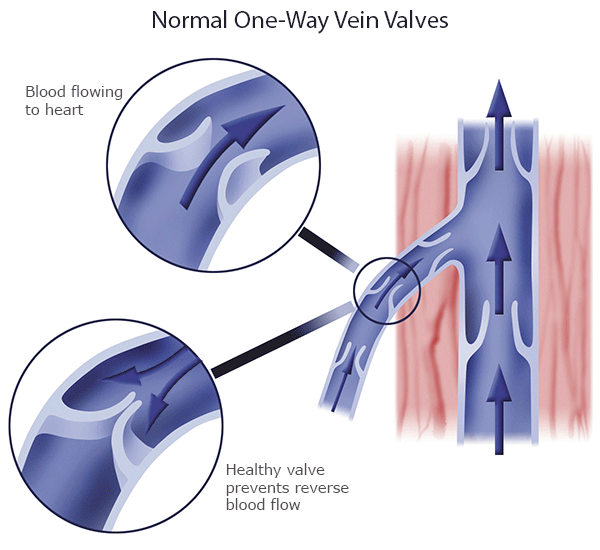
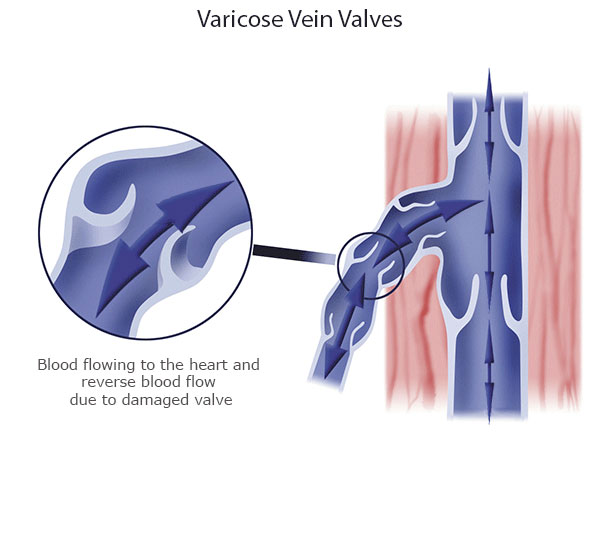 Some typical symptoms of varicose veins may include:
Some typical symptoms of varicose veins may include:
- Swelling of the feet, ankle or legs
- Throbbing or burning in the legs
- Heaviness or discomfort in the legs
- Changes in the color of the skin or the skin becoming harder or thicker
- Problems with blood clots
- Bleeding from the vein that’s hard to stop
- A wound, or sore, on the leg that takes a long time to heal
How Varicose Veins Form – Prolonged Standing Is a Risk Factor
Standing all day at work could put you at a potentially higher risk for developing varicose veins.
Veins carry blood back towards the heart. While they do have some muscles that help push blood along, the muscles in our legs that help us walk also play an important role in moving blood.
It makes sense then, that if you sit or stand all day, the leg muscles are not helping push the blood along. Additionally, standing increases the distance that blood has to travel against the pull of gravity, which also may be slowing things down.
There are some interesting connections between being on your feet for too long and varicose veins. The following may contribute to developing or worsening of varicose veins:
- Standing for more than 6 hours a day
- Lifting more than 2200 pounds in a day
- Wearing high heels, which place the calf in a contracted position, meaning the movement of blood through the veins is not helped by the muscular contractions that normally occur with walking ii,iii
Other Important Risk Factors On How Varicose Veins Form
Whether or not you are on your feet all the time is not the only factor that increases your risk for varicose veins. Usually it’s a combination of factors. Other factors that may increase your risk of developing varicose veins might include:
- Genetics – You may have other family members with varicose veins, which may mean you’ve inherited incompetent vein valves
- Female hormones – Women are more likely than men to develop varicose veins. It’s widely believed that female hormones cause veins to relax, which can weaken them. There is also an increased risk for varicose veins when taking medications that contain female hormones, such as birth control pills and hormone replacement therapy
- Pregnancy – In addition to an increase in female hormones, the growing fetus puts pressure on the veins. This is usually temporary, and the varicose veins that form during pregnancy often go away after 3 months
- Weight – The veins are put under more pressure if you are overweight or obese – losing weight may help reduce the risk of varicose veins forming iv
To learn more about the risk factors for varicose veins, check out our article “The Top 9 Varicose Vein Risk Factors”
Do you suspect being on your feet alot is worsening your varicose veins? If you’re looking for a way to combat your varicose veins without medical interventions, you might want to start with some simple lifestyle changes. You may be able to get some relief from varicose veins by trying some or all of the following:
- Find time to sit down and elevate your legs – try to do this for 30 minutes, 4 times a day.
- Wear compression stockings while you’re on your feet. These special elastic stockings can be purchased over-the-counter. Depending upon how severe your varicose veins are, your doctor may prescribe stockings with a certain amount of pressure for you. You should put the stockings on when you first wake up, and then take them off before you go to bed each night.
- If you wear high heeled shoes, consider adding more flats into your wardrobe and rotating the types of shoes you wear throughout the week. i,iii
Keep in mind, these changes may not be enough to completely eliminate your varicose veins. If you’ve tried these conservative treatments and are still experiencing painful symptoms, it may be time to talk to vascular specialist. There are minimally invasive treatments that may be able to effectively treat your varicose veins. Speaking with a vascular specialist can be an important next step.
Sources:
i Lin, F., Zhang, S., Sun, Y., Ren, S., Liu, P., The Management of Varicose Veins. Int Surg, 2015. 100: p. 185-189. https://www.ncbi.nlm.nih.gov/pmc/articles/PMC4301287/
ii Tabatabaeifar, S., Frost, P., Andersen, J., Jensen, L., Thomasen, J., Svendsen, S., Varicose veins in the lower extremities in relation to occupational mechanical exposures: a longitudinal study. Occup Environ Med, 20156. 75: p. 330-7. https://www.ncbi.nlm.nih.gov/pubmed/25575530
iii National Heart, Lung and Blood Institute, How Can Varicose Veins Be Prevented? https://www.nhlbi.nih.gov/health/health-topics/topics/vv/prevention (updated 2/13/2014, accessed 12/4/2016)
iv National Heart, Lung and Blood Institute. Who Is at Risk for Varicose Veins? https://www.nhlbi.nih.gov/health/health-topics/topics/vv/atrisk (updated 1/29/2016, accessed 11/30/2016)
